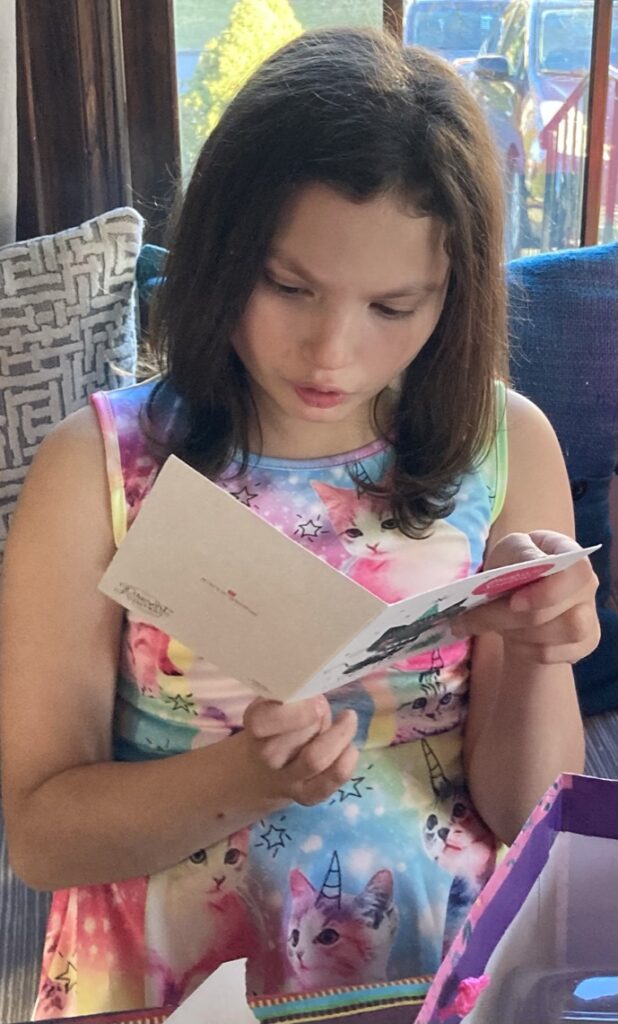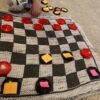The swirling energy of the holidays should be joyful. Homes are filled with scents of cinnamon, construction paper crafts, and tins of cookies. (Not in my house – but in every Hallmark movie I watch). My house has more of the vibe of someone who woke up to realize they overslept and their flight is leaving in an hour. You know, an entrance filled with decapitated goldfish, one random shoe, and a Valentine’s Day Craft from 2018.
But while the most stressful part of the season should be figuring out how to collect and hide the next package delivered to your doorstep before your children discover it, for families living with children with sensory dysregulation, this time can be enough to make everyone want to hide in the closet until the New Year rolls around.
My family has discovered a few tips to help navigate these festive times.
- CREATE ROUTINES AROUND GIFT OPENING

Waiting is VERY difficult to do, especially for a preferred activity like opening a new present. We have established a structure around gift opening, or else the thought of it will create a tailspin for an entire day (even week). We create a visual schedule of how the day will look so our children know exactly when the present open portioning part of the day will begin. (Ex: Drive to Aunt Rachel’s house. Eat Dinner. Decorate cookies. Open one present for 1st night of Chanukah. Eat cookies). It doesn’t take the fun out of the surprise. It adds to it because then they can really enjoy opening the presents before the excitement turns to fatigue.
2. PLAY GAMES DURING GIFT OPENING
Creating an activity around gift-giving helps to deflect some of the excessive energy that occurs. Some of our favorite games for this purpose are:
- Hot And Cold: The item has been hidden in the house and the kids are given temperature clues to see how close they are. (You are freezing! = Keep Looking. You are on FIRE = you are almost there!)
- Scavenger Hunt: Spreading out clues around the house burns some energy. This is so successful in our house, that even after a series of nine clues to ultimately discover the treasure was “a sticker,” the kids cheered and celebrated their win.
- Clue in a Bag: This game works the best for a present that can be deconstructed (think craft set with several pieces). We spread out high-interest items (figures of Disney princess, Starwars, etc). Each child gets to grab a figure that “unlocks” the corresponding paper bag. The adult hands out the paper bag and gives out whatever is inside that particular bag. The game continues until all the paper bags have been emptied, and the kids have put their present together.
3. INTERACTIVE AND EXPERIENTIAL GIFTS
For some kids with sensory processing issues, too much happens VERY quickly. This is true in our house. That’s why we like to create as many experiential opportunities as possible. Not only does it help reduce the clutter of more stuff the kids don’t need, but it also helps with managing the energy of the season. Here are some examples:

- PJ and Hot Chocolate Drive to look at holiday lights with a neighbor. Arrange a time for the neighbor to knock on the door & surprise the kids. Then pile in the car with your snuggly pajamas, pull up in front of a decorated house, and play “I spy” until they get bored (or someone has to go the bathroom)
- Gingerbread Contest: Pick up a gingerbread house kit (my favorite is the Ugly Sweater cookie) and have a family competition. Create different categories: the one that looks the most like what it is supposed to be, the one that stood the longest, the one that used the most ingredients.
- Virtual Opportunities: Revisit “The Five Best Virtual Ways To Stay Connected” for some suggestions of how to connect to loved ones, even when apart.






